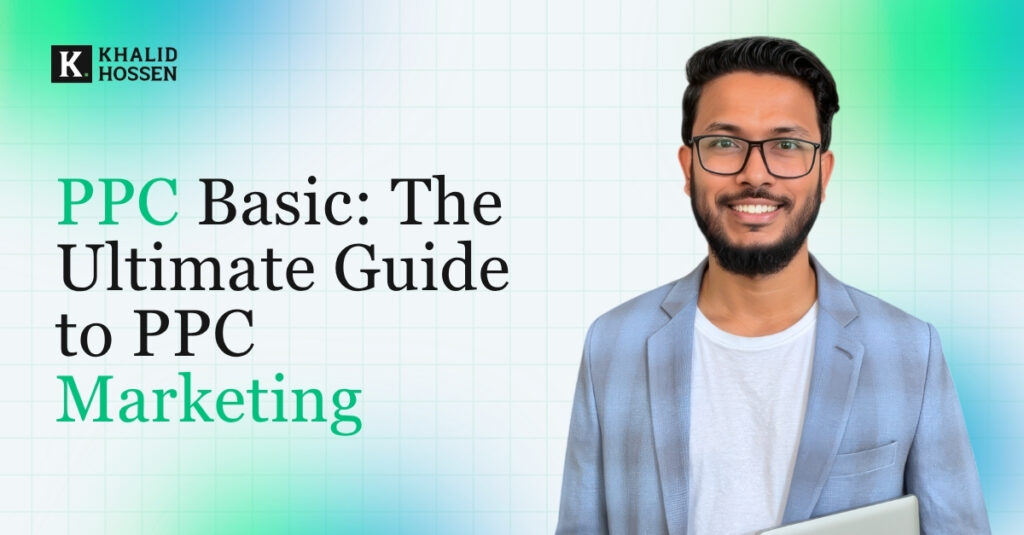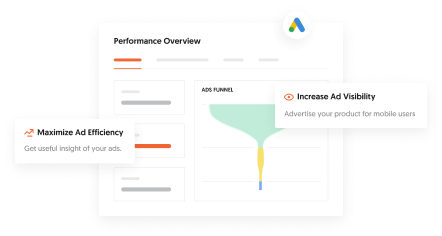The Ultimate Guide to PPC Advertising & Marketing (USA 2025)
Introduction: Why Paid Search Matters in 2025
In 2025, PPC advertising remains one of the most powerful tools in digital marketing. Whether you’re a local business owner trying to generate leads, an e-commerce brand looking to increase conversions, or a digital marketer scaling campaigns, this approach provides immediate visibility, highly targeted reach, and measurable ROI. This ultimate guide breaks down pay-per-click advertising and marketing into clear, actionable steps tailored for businesses and marketers in the USA.
What is PPC advertising?
This advertising model involves advertisers paying a fee each time one of their ads is clicked. It’s essentially a way of buying visits to your site, rather than attempting to “earn” those visits organically.
Popular platforms include
-
Google Ads: Dominates search engine advertising.
-
Microsoft Advertising: Bing network, often overlooked but cheaper CPC.
-
Facebook Ads: Ideal for highly targeted display and video ads.
-
LinkedIn Ads: B2B audience targeting.
-
Amazon Ads: E-commerce brands directly targeting purchase-ready users.
How Paid Search Marketing Works
This is not just about paying for clicks—it’s about strategy. You bid on specific keywords relevant to your business. When someone searches for those keywords, your ad may appear. If they click, you pay. But success depends on several factors:
-
Quality Score (Google): Determines ad relevance and landing page quality.
-
Bid amount: The maximum you’re willing to pay per click.
-
Ad copy and creative: Directly impact click-through rates (CTR).
Types of Paid Search Advertising
If you’re running a marketing strategy in 2025, integrating this form of advertising is essential. A successful campaign starts with choosing the right platform and following industry best practices. Whether you’re focused on online advertising or broad digital advertising, this method gives you targeted control over who sees and clicks on your ad.
Unlike traditional ads, paid advertising through a search engine marketing approach lets you measure your cost per conversion and refine your campaigns in real time. When users click on your ad, you’re paying for results, making these ads one of the most efficient tools in the digital space today.
Here are the most commonly used formats:
-
Search Ads: Appear at the top of search engine results.
-
Display Ads: Banner ads across the web.
-
Shopping Ads: Product-based ads on Google Shopping or Amazon.
-
Video Ads: Primarily on YouTube.
-
Remarketing Ads: Target users who’ve visited your site before.
Benefits of Paid Search Marketing
-
Instant Traffic: Unlike SEO, this method can generate clicks from day one.
-
Highly Targeted: Filter by location, demographics, interests, and behavior.
-
Budget Control: Set daily and monthly caps.
-
Measurable ROI: Detailed metrics like CTR, CPC, conversion rate, and ROAS.
-
Brand Exposure: Even if users don’t click, they see your brand.
Paid Search PPC vs. SEO: Which Is Better?
This advertising delivers quick results, while SEO is a long-term game. Ideally, combine both. Use paid search to test keywords, drive immediate traffic, and boost new product visibility. Use SEO for sustainable growth and authority.
| Feature | Paid Search | SEO |
|---|---|---|
| Time to See Results | Immediate | 3–6 months or longer |
| Cost | Pay for clicks | Investment in content & tech |
| Longevity | Stops when the budget ends | Long-lasting |
| Ideal Use | Promotions, testing, launch | Authority, evergreen traffic |
How to Set Up a Paid Advertising Campaign (Step-by-Step)
If you’re exploring paid media, this ultimate guide to marketing is designed to help you understand every major concept and tactic you’ll encounter. A guide to paid advertising is essential for anyone serious about leveraging this core advertising strategy. This complete guide will walk you through everything you need to know, from setting up advertising campaigns to understanding key terms and definitions.
This form of online advertising works well for both startups and established businesses. It refers to the model where each click is purchased, allowing for efficient budget control. Popular platforms like Google Ads and Bing Ads are the foundation for most paid ads.
-
Define Your Goal
Decide whether you want to generate leads, drive sales, increase site traffic, or promote brand awareness. -
Choose the Right Platform
Match your target audience and business model to the best ad network (Google Ads, Facebook, LinkedIn, etc.). -
Keyword Research
Use tools like Google Keyword Planner, SEMrush, or Ahrefs to find high-intent, low-competition keywords. -
Write High-Converting Ads
Use compelling headlines, relevant descriptions, and clear calls to action (CTAs), and match them to search intent. -
Create Targeted Landing Pages
Ensure your landing page matches the ad offer, loads fast, and is mobile-friendly. This boosts conversions and lowers CPC. -
Set Budget and Bids
Start with a manageable daily budget. Choose between manual or automated bidding strategies like Maximize Conversions or Target CPA. -
Launch and Monitor
Once live, track metrics daily. Watch for impressions, clicks, CTR, CPC, Quality Score, and conversions. -
Optimize Continuously
Pause underperforming ads, test new copy, adjust bids, and refine targeting. Use A/B testing for creatives and landing pages.
Key Metrics That Matter In PPC
-
Click-Through Rate (CTR): Percentage of people who clicked your ad.
-
Cost Per Click (CPC): How much you pay for each click.
-
Conversion Rate: Percent of clicks that result in desired actions.
-
Return on Ad Spend (ROAS): Revenue earned per dollar spent.
-
Impression Share: Your ad’s visibility compared to competitors.
Common Advertising Mistakes to Avoid In PPC
Launching a campaign successfully requires understanding ad copy, targeting, bidding strategy, and landing pages. Elements of setup determine how well your campaign performs. Whether you’re using Google or Bing, Bing offers an advertising program suitable for marketers with smaller budgets.
When choosing your platform, consider where your target audience spends time online. Keep in mind that some platforms are better for B2B, while others excel in B2C spaces. A quality strategy also means using solid management tools to analyze and refine your performance. Marketing data and advertising go hand in hand—you can’t scale what you don’t measure.
-
Ignoring negative keywords wastes budget on irrelevant clicks.
-
Sending users to your homepage reduces conversion rates; use custom landing pages.
-
Skipping A/B testing hurts optimization potential.
-
Not tracking conversions leads to poor decisions.
-
Focusing only on traffic neglects quality; prioritize quality over quantity.
Paid Advertising for Local Businesses in the USA
Ads allow you to appear instantly in front of searchers, linking paid advertising and search engine visibility tightly. These ads also support your organic SEO efforts by keeping your brand visible. Many marketers use advertising data to inform broader strategies, combining insights from both paid campaigns and SEO.
Location, device, and demographic targeting are features that make paid advertising a compelling solution. When promoting products or content, ensure ads match user intent. Always follow practices for a quality campaign.
Local advertising can drive foot traffic and phone calls. Use Google Local Services Ads, location-based targeting, call-only ads, and Google My Business integration.
Tools to Improve Your PPC Campaigns
Use this guide about building a campaign to set up your ads for success. Parts of a great campaign include clear goals, well-crafted ads, and thoughtful keyword research. For beginners, the ultimate Google Ads kit can help prepare your first campaign. Whether launching or refining a campaign, stay aligned with the latest best practices.
As you build your campaign, remember this method can earn quality leads, brand visibility, and measurable ROI. Take a strategic approach and invest time in continuous improvement.
Recommended tools:
-
Google Ads Editor: Bulk edit your campaigns.
-
SpyFu: Analyze competitors’ strategies.
-
Unbounce: Build high-converting landing pages.
-
Google Analytics 4: Deep insights into user behavior.
-
Zapier: Automate lead flow from forms to CRMs.
Future Trends for PPC 2025 and Beyond
Your next campaign should be data-driven, goal-oriented, and aligned with overall business objectives. This strategy is just one piece of your marketing plan, but it can deliver an outsized ROI when executed well. A solid understanding of terms helps marketers start confidently.
Ongoing testing, clear targeting, and understanding key metrics are vital. Marketing data helps manage campaigns efficiently. Effective management ensures every part contributes to conversions.
-
AI-powered ad optimization: Machine learning will dominate bidding and targeting.
-
Voice Search Ads: As voice assistants grow, strategies will adapt.
-
Videos and Shorts: Video ads on YouTube, Instagram Reels, and TikTok will become central.
-
Privacy Compliance: Ad targeting must comply with stricter privacy laws (CCPA, GDPR).
Explore More on Khalid Hossen
Looking to deepen your knowledge? Check out our other insightful articles to stay ahead:
-
Effective SEO Strategies for 2025 — Learn the latest techniques to boost your website’s ranking and drive organic traffic.
-
How to Optimize Your Google Business Profile — A step-by-step guide to dominate local search results.
-
Top Digital Marketing Trends — Stay updated with the newest trends shaping online marketing this year.
-
Beginner’s Guide to Content Marketing — Master content marketing fundamentals to grow your brand effectively.
Explore these resources to gain actionable insights and elevate your digital presence!
Conclusion: Launch and Scale with Confidence
Paid advertising and marketing aren’t just about throwing money at ads—they require strategy, analysis, and ongoing refinement. Following this guide’s steps provides a foundation for successful, ROI-driven campaigns in 2025 and beyond.
Whether starting your digital marketing journey or scaling an existing campaign, this approach can be a game-changing addition. Dive in, test, learn, and grow.




